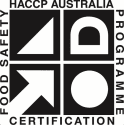So you’re looking for the right protective glove.
You started the search and were met with pages and pages of different glove options.
You don’t have time to read all the descriptions, all the specs, all the benefits, and all the other info. What does it all mean anyway?
We want to make it easy.
Before we get into it, protective gloves can be categorised into 3 types:
Disposable
(Nitrile, vinyl, latex, etc)
Reusable
(Cut resistant, leather, etc)
Specialty
(Chemicals, heat, etc)
Ready to find the right work glove for you without the headache? Follow these five steps
1. Identify The Hazards
Start with assessing the risks of your tasks.
- Will you be handling chemicals?
- Are there potential mechanical risks? (punctures, cuts, etc)
- Will you be handling very hot or cold items?
- Will you be touching food?
Identify any other potential hazards you might face. You can’t find the right work glove without knowing what you will face.
2. Know The Task Details
Once you’ve identified the hazards, dive into the specifics.
- Chemical Interaction: What type? How long will you be exposed? Is contact intentional or incidental?
- Mechanical risks present: What risks? Abrasion, cuts, punctures, tears, impact?
- Temperature affected items: How hot or cold? How long will you be handling them?
Understanding these details will guide your choice of material.
E.g. Intentional contact needs a more heavy duty glove than incidental contact. Handling items 150°C or below requires less heat protection than handling 1000° and above.
3. Select The Glove Type
Now, you can narrow down your options to a specific glove type.
- Chemical splash risk (incidental contact, not intentional): Nitrile disposable gloves
- Heavy duty chemicals exposure: Specialty chemical-resistant
- High risk of mechanical hazards: Reusable gloves with EN388 certification
- Specialty needs (e.g. heat, needle protection, voltage protection, etc): Specialty gloves made for your purpose
Discover the range by The Glove Company below
4. Ensure it’s a good fit
A good fit is about more than size, it’s about the glove’s performance.
- Size: Too big and you lose dexterity, too small you restrict movement. Learn more
- Dexterity: Some gloves offer better hand movement. Learn more
- Grip: Will you be working with wet or oily items? Learn more
- Sweat control: If your hands sweat, you need sweat wicking technology. Learn more
5. Check the certifications
You narrowed down your options, now verify the glove meets the necessary standards. Below are examples of some certification symbols.
Chemical resistance:

Safe food handling:

Mechanical risk protection:

Heat protection:

Discover more about the glove standards here
6. Talk To The Glove Experts
Still unsure? There are strict PPE requirements for workplaces, check out SafeWork to ensure you’re compliant. Click here.
Reach out to our Glove Experts, they can find the right work glove for all your needs!
